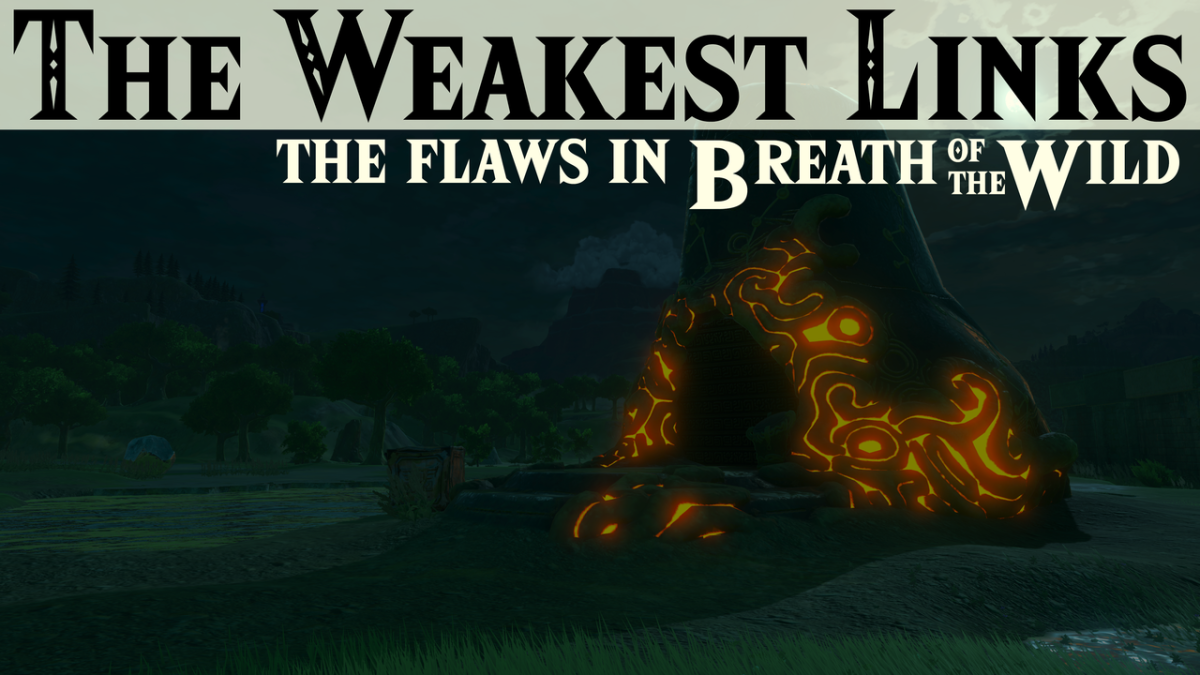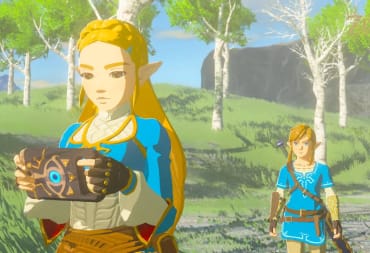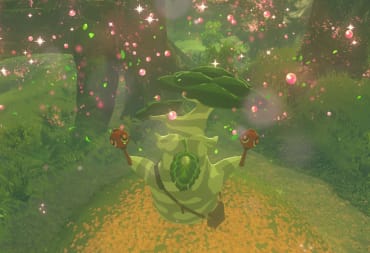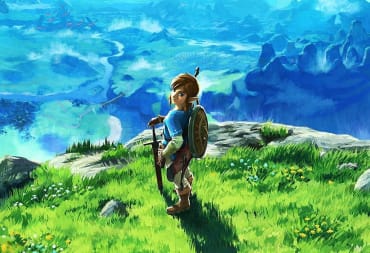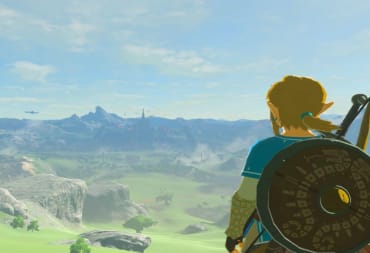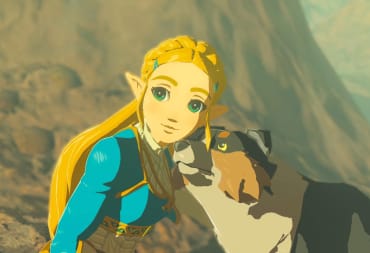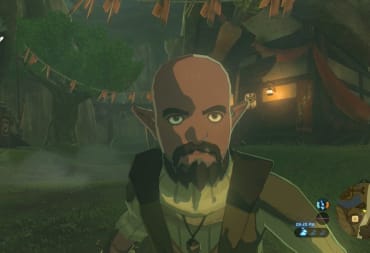I finished The Legend of Zelda: Breath of the Wild recently. Considering that I began playing it when it launched, you don’t have to tell me how slow I am with starting and finishing games. That’s especially true for open world games, which will often take me a couple months to “beat” to my satisfaction, so you can imagine why I tackled Breath of the Wild in small increments until I had my fill with about 90 hours of playtime. I still remember giving my glowing, initial impressions in an article where I largely defended the game’s positive reception. Seems awfully hypocritical to be penning a piece with a title like this, right? However, let’s look back on something I said:
I’ve only played around 10 hours of The Legend of Zelda: Breath of the Wild and can see why critics are claiming it to be a masterpiece. [...] I marvel at how I’ve still seen so little, and while I know the game has numerous flaws that can steal its shine for some players more than others, there’s a brilliance at its core that cannot be dispelled.I stand behind this notion. 80 hours later, I still believe the game has the most compelling, believable open world I’ve had the pleasure of experiencing in a videogame. Being able to roam wherever I pleased filled me with rampant wonder and curiosity. The detail and elements throughout Hyrule’s diverse environments captivated me in far greater ways than I could’ve imagined, and just when I thought I’d seen everything, I discovered other massive areas like the rainy, autumn hills of Akkala and the tropical wetland of Faron. There are surprisingly in-depth, novel challenges associated with a lot of Shrines. I found layered side quests that took exciting turns I never expected, which even touched me on occasion with some of the stories behind them. I recall fun strategies I implemented with encounters, emergent events that swept me away during exploration, and much more. These are several reasons why Breath of the Wild remains one of my top contenders for game of the year.
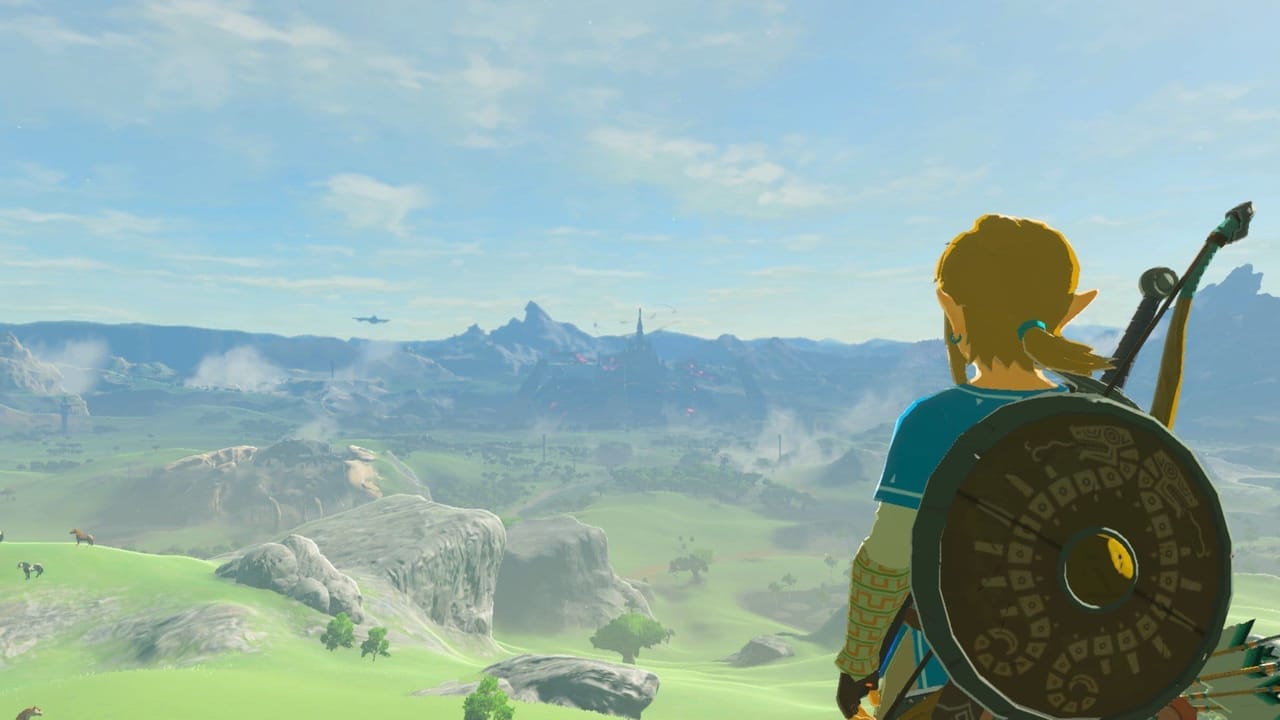
But that doesn’t mean it’s without fault. In fact, I have more issues with the game that weren’t apparent from the first dozen hours. Some of these problems relate to ones covered in the more critical reviews I cited in the aforementioned article, but even they gloss over or don’t mention questionable issues that I came across, sometimes focusing on non-issues that don't detract from the experience in the slightest. It’s even more surprising how the highly positive reviews didn’t acknowledge these issues I had or came to entirely different conclusions.
However, it’s important to remember that games with uncommonly strong, masterful design in some areas can overshadow significant flaws, and that’s okay. Metal Gear Solid V: The Phantom Pain is an exceptional example. It’s a game riddled with terrible pacing, a disappointing story, lacking bosses, and rehashed content in the latter half of its campaign, but the core stealth mechanics and gameplay are a peak for the series. As a result, it’s far better than it has any right to be. I’d describe Breath of the Wild in the same exact way. While it paves the way for phenomenal open world design, I’d like to go over five general flaws—major and minor alike—I found in an otherwise exceptional experience, hoping that Nintendo will address them in Link’s next adventure.
Cumbersome, Intrusive UI Design
Bioshock, Dishonored, and Mass Effect give players a lot of equipment and abilities. To accommodate this, stripped down inventory management systems (weapon wheels being the most common example) are implemented that freeze or slow down time whenever they’re brought up. This allows the player to realistically strategize and execute complicated maneuvers, but the presence of this mechanic can cause unintended problems. Needing to rely too much on it can bring the player out of the game with a repetitive “pause, resume” gameplay loop that’s more annoying than fun. On the other hand, inventory that’s not accessible with this mechanic but proves necessary in combat can needlessly bog the player down. No one wants to navigate menus during intense situations because it feels awkward and intrusive. I’m looking at you, The Elder Scrolls V: Skyrim.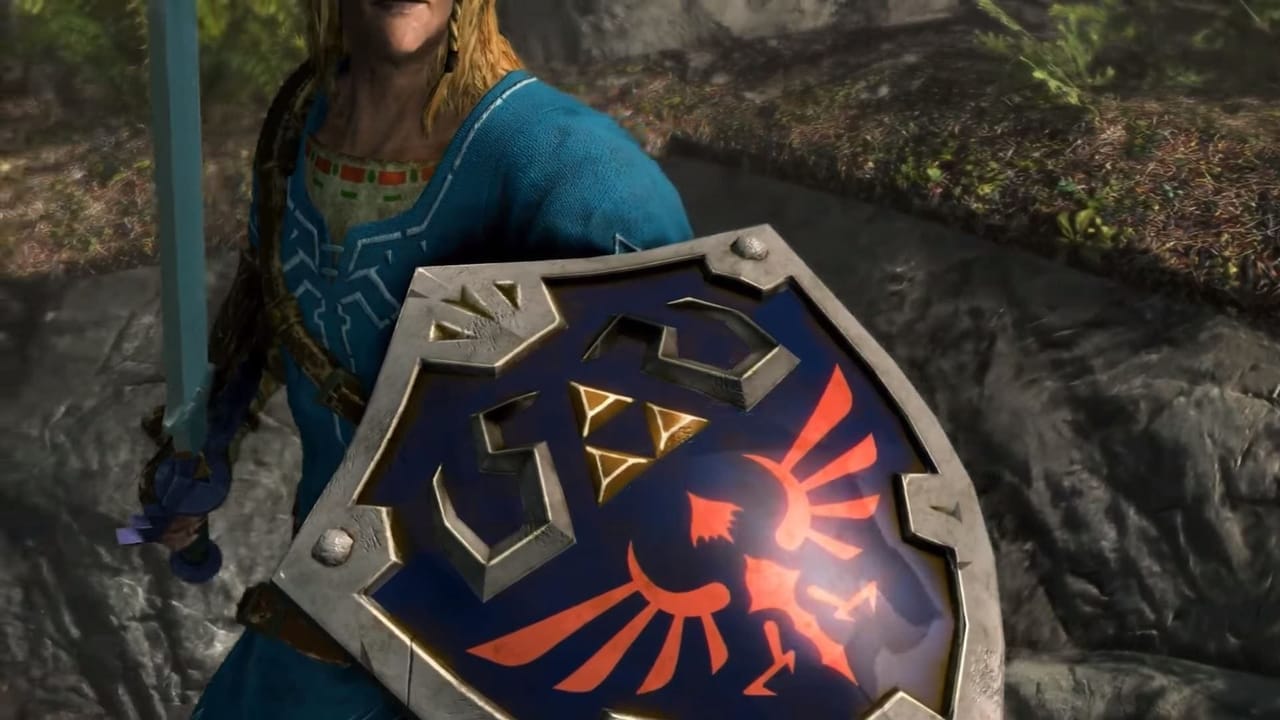
Breath of the Wild has a ton of stuff to pore over, too. Thankfully, the most important stuff (shields, weapons, bows, and arrows) is immediately accessible with the d-pad. Since the game is structured around breakable equipment, having time pause while you equip new or different things is a lifesaver, but this system has irritating limitations and effects on gameplay. Firstly, not being able to access food and elixirs forces the player to abruptly pause the game when they need health or a stat boost. It’s made worse with being able to only navigate categories linearly, which should have integrated the ZL and ZR buttons to skip categories more easily, thereby allowing even quicker access to food, armor, and whatnot.
As for streamlining this accessibility in-game with the d-pad, the left (or right) d-pad could've been designed for all relevant categories by moving not just horizontally through one category, but vertically as well to allow navigation through others. This would have freed the opposing d-pad button for a customizable, mixed rack of items to sort through, making strategies for combat even more efficient to realize. This could’ve been further complemented with an optional automatic system that immediately replaces equipment and uses food/elixirs upon certain conditions. For example, the player could create an order of five meals from the inventory menu to immediately eat upon depleting their hearts without needing to pause the action.
With these features, it would then be feasible to disable full inventory management during fights and keep time running as normal or slowed down at the most. These changes would add needed tension and difficulty to fights. There’s also the promising possibilities of reserving inventory selection and features to the touch screen of the Switch or Wii U, but considering that both systems rely playing the game away from the TV, the constraints of one screen should be maintained in this critique.
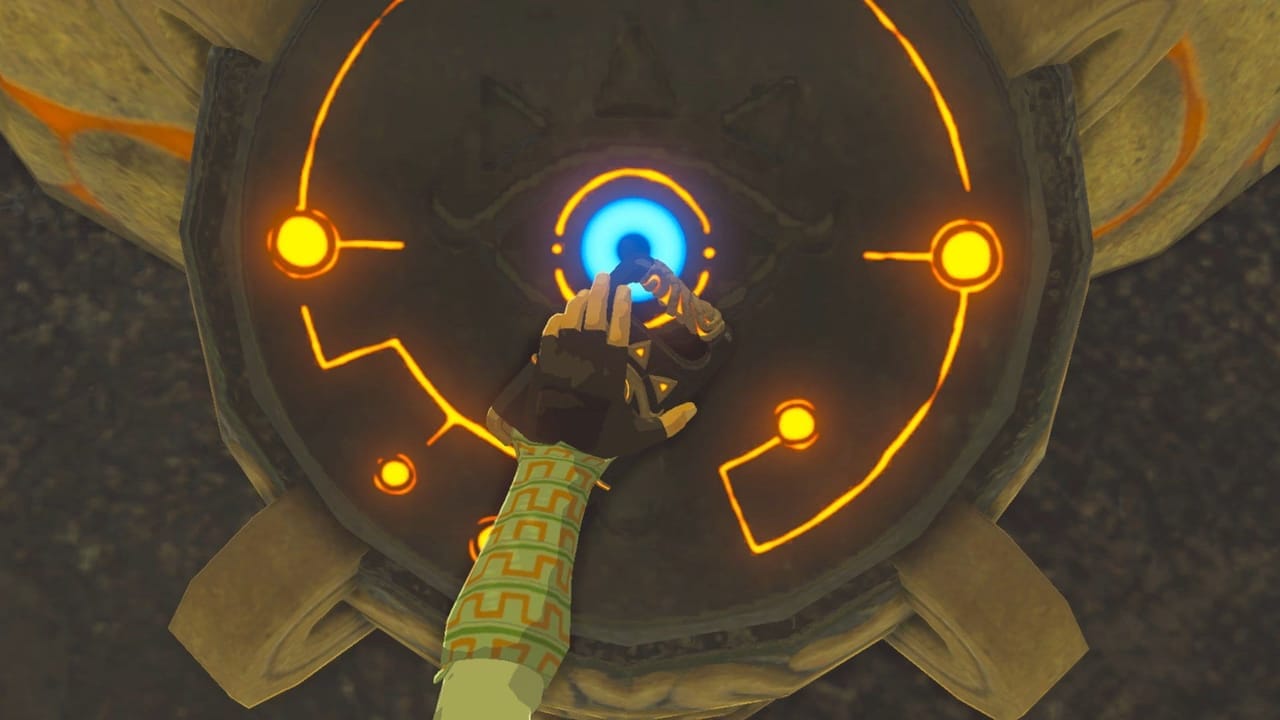
Another inconvenience that comes up all too often is the lack of previews for newfound weapons and shields. A little arrow that tells you about the item’s strength compared to an equipped one is no help at all, since Link has a whole arsenal to consider tucked away in his tiny pouch. A prompt where you can quickly contrast the item to what you own in its respective category would’ve been obvious to implement, or at least a pop-up that shows basic stats.
Ambiguity With Cooking and Item Overabundance
There’s a great deal of fun to be had in discovering a potent dish or elixir through cooking. Some common sense and experimentation go a long way when you take time to look into the ingredients you’ve collected. However, when it comes to more obtuse recipes, you’d think that Link would have a means to record his culinary creations in a notebook of sorts, but that’s not the case. Interestingly enough, you can preview what ingredients you used to make something when you hover over it, but once it’s gone, the ingredient list goes with it. Having the option to selectively save concoctions would’ve been personally time for me of writing them down. On the subject of record keeping, this would’ve been useful for keeping track of things with a sketch pad or being able to draw on the world map via the touch screen. It’s not a foreign concept to the franchise either, considering that Phantom Hourglass and Spirit Tracks have implemented features akin to this. And before you interject that this ignores my earlier comment about keeping to a one-screen philosophy, I’m confident this would’ve been easy to implement between going from the TV to being on the go.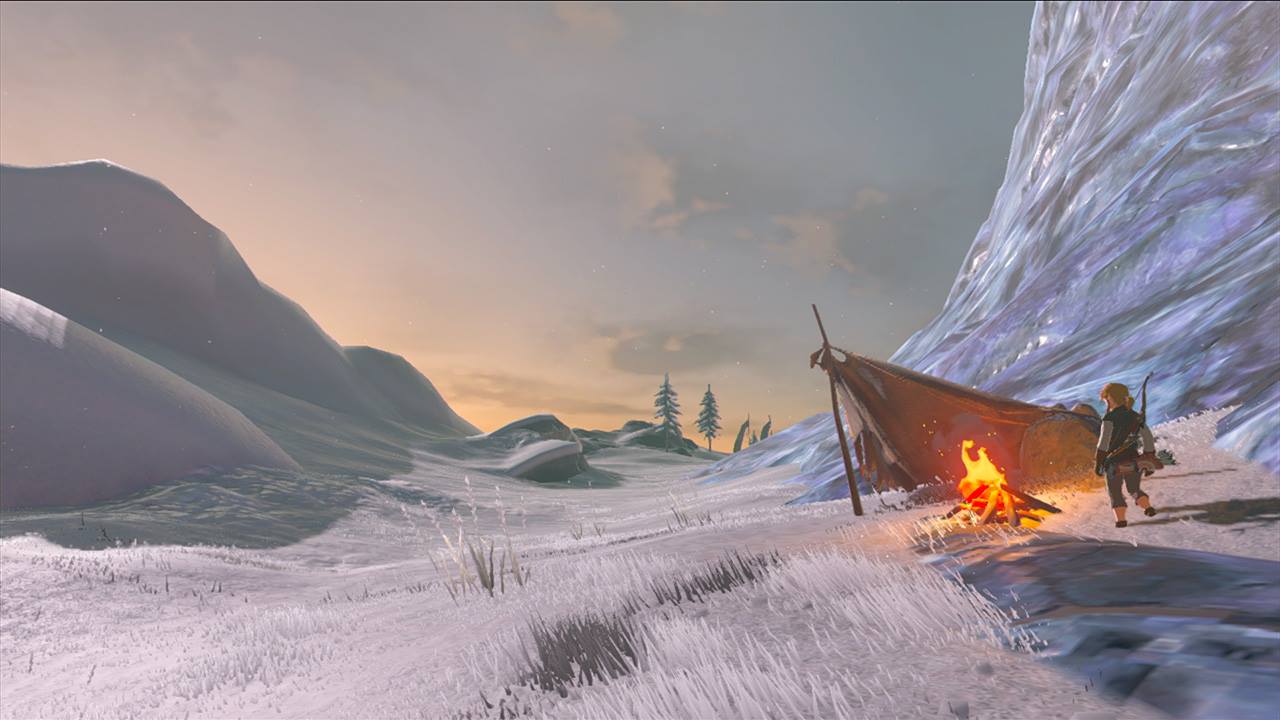
Swerving back to ingredients and items, a friend pointed out to me how there’s a surprising overabundance and lack of uses for them in application. Sure, you can combine some unexpected items when you dye your armor or upgrade it with the Great Fairies, but this doesn’t impact your relationship with garnering items for more practical purposes. What’s the point of Chuchu Jellies beyond laying them on the ground as a trap for enemies, which is usually a waste of time? Why are there so many monster parts that effectively accomplish the same thing with elixirs? Why give a mushroom, plant, fish, and crab all the same attack boost with dishes that don’t mean a lick of difference except for how they look? Considering that many of these items are too common, I think an overall decrease in item drops (or the commonality of a specific animal, plant, etc.) would’ve gone a long way toward making the survival aspect of Breath of the Wild more compelling with bigger incentives to go out of your way to explore and hunt. However, when I bring up issues of ingredient usage, what else could they be used for beyond food and armor upgrading? That ties a bit into my next point.
Side Quests and Fighting Enemies Quickly Lack Payoff
Every Shrine, treasure chest, and foe you come across is unbelievably enticing once you emerge from the Shrine of Resurrection. Besides abilities gained from the Champions, hearts, and stamina, you’re only as good as the equipment you’re wearing and wielding. This means you’re motivated to go after everything you see in the hopes of building Link’s offensive and defensive capabilities. It’s an exciting climb for 20-30 hours or so, but I discovered that I had essentially plateaued by then. It got to the point where my inventory was full of duplicates of items that were among the best the game offered. This would’ve been expected near the end of my playthrough, but since it occurs so early on, I was left with dozens of Shrines, side quests, and enemies to fight that lost much of their appeal. Besides the joys of experiencing these things in themselves, the rewards and reasons behind them were largely lost.After all, why make the effort of doing a lengthy side quest for a paltry amount of Rupees? Why break more weapons and waste meals on taking down enemy encampments for a useless weapon? Why should Shrines lack useful rewards besides Spirit Orbs early on? There are circumstances where this doesn’t happen with unique rewards worth pursuing, such as with The Royal White Stallion side quest or Lynel fights. However, even the scaling behind acquired loot isn’t enough to care about later on. While it may get further away from distinguishing Breath of the Wild as a traditionally Zelda game, much of this could’ve been solved with leveling and skill trees for Link.
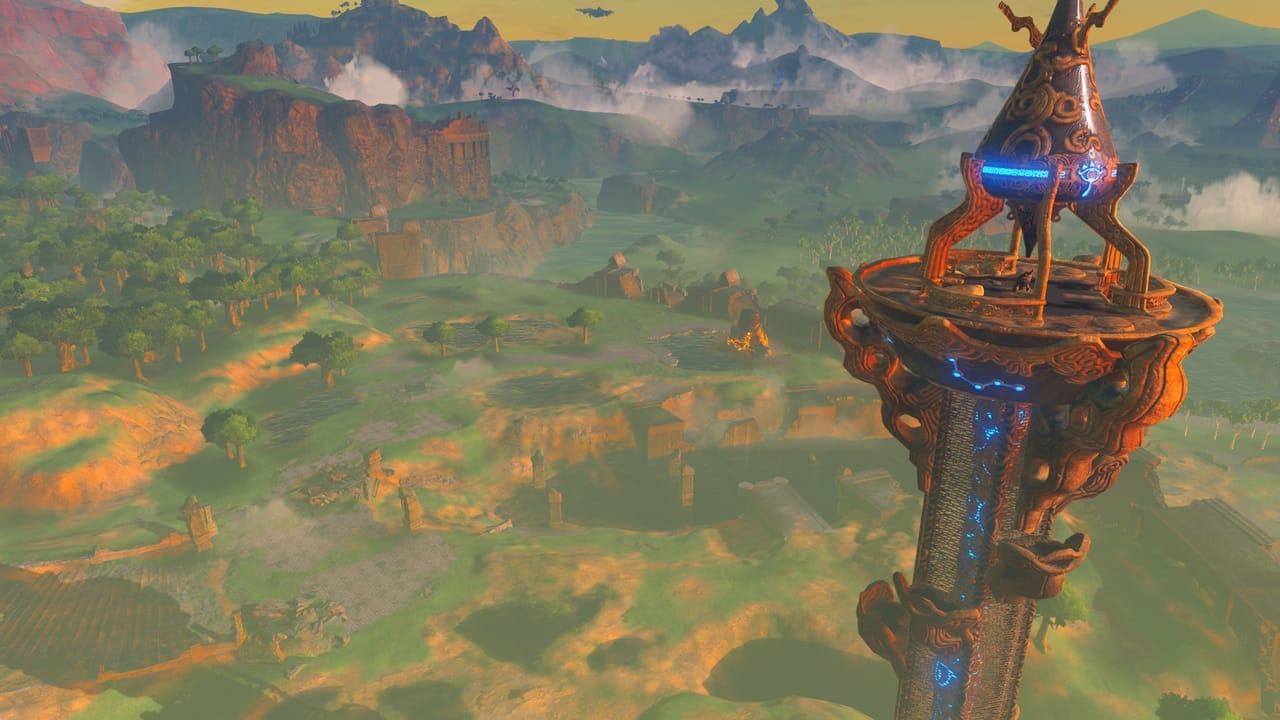
It should be said that this wouldn’t require canning any of the game’s established systems, but merely adjusting the payoffs of completing side quests, fighting enemies, and the like. If Breath of the Wild had a similar, incremental leveling system to the Souls series or Skyrim, participating in fights would have much more meaning if you could boost Link’s inherent attack stats. The same could be said for Shrines, which could boost his inherent defense upon completing each one. As for side quests, specific types might contribute to special skill trees related to combat, stealth, and overall move effectiveness (like bow drawing speed, more forgiving parrying, and whatnot). This doesn’t even have to be limited to completing quests or defeating enemies. Tying into my previous point, perhaps certain ingredients and items could contribute toward leveling Link’s base stats up or unlocking special passives and moves (this would be similar to how you upgrade armor with the Great Fairies). What if collecting all of the parts from specific dragons gave Link access to special elemental moves? Maybe precious gems like Sapphire, Topaz, and Rubies could boost Link’s inherent resistance to heat, electricity, and ice?
If these principles were integrated into the game’s design, the possibilities are vast and complicated with items’ newfound usage and how leveling would impact how you approach everything. I can only see this bringing lasting, greater meaning to exploration, but to bring this about, combat needs to be shaken up in the process.
Repetitive Combat and Simple Enemy Types
The Legend of Zelda has never been known for engaging combat. The challenge comes in analyzing enemy patterns and exploiting weaknesses with a wide range of abilities and equipment. It wasn’t until Skyward Sword where the direction of your attacks actually mattered. Say what you will about the accuracy of its gameplay, but it was a giant leap forward for the series with more engaging combat, and that’s something that was lost again with traditional controls for the Switch and Wii U. Does it have to be this way? Hardly. It would only take a matter of creating directional attacks with the left analog stick to bring more thrills to sword fights. This wouldn't only open up the possibility of stringing certain moves together as combos, but also give life to a combat-oriented skill tree.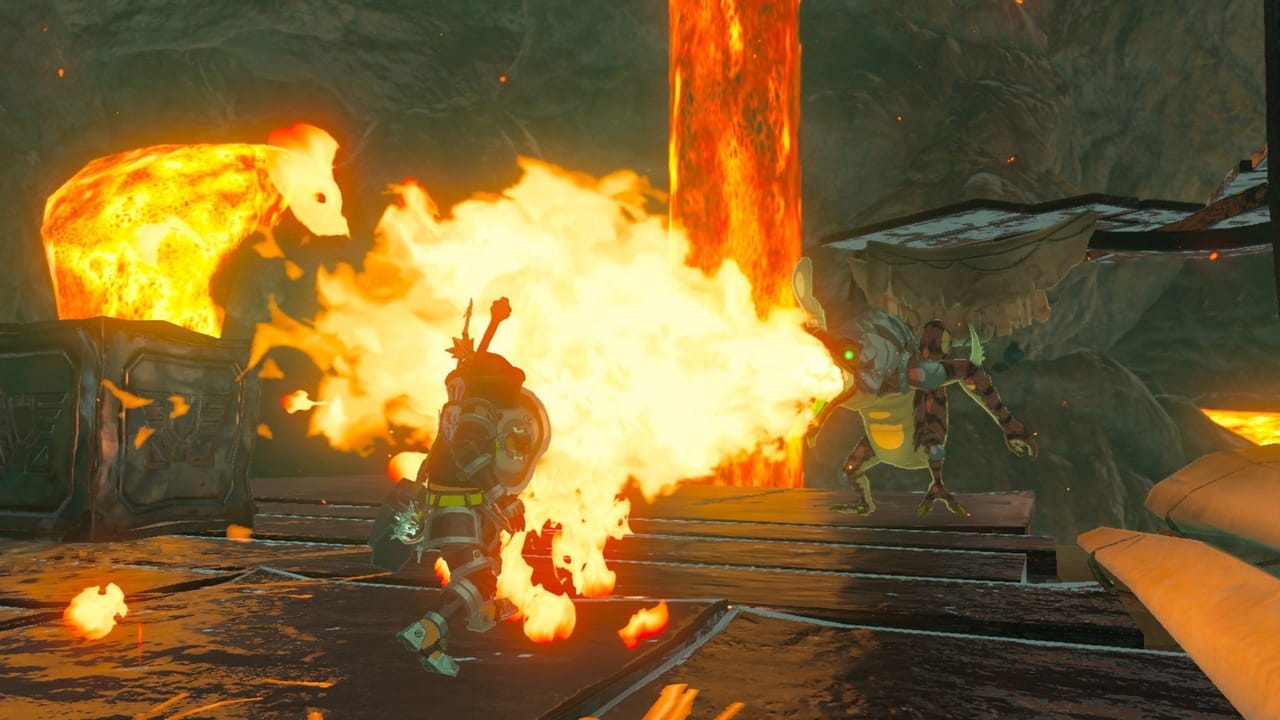
I think one of the most important reasons for this change is to force the enemy population into needing more compelling movesets and dangerous counters to fight Link. As the enemies are, the only reason why they become more challenging is usually due to exorbitantly increased health and attack power. Despite a lot of the AI's clever, unexpected behavior, this simplicity even defines the white variants of Bokoblins and Moblins. Instead of this type of scaling, what if enemies began to develop attack patterns that required specific moves you must unlock to confront them with confidence? What if they started developing truly thick skins against normal weapons and other elements with the exception of fire or ice? You can imagine how this would create more back-and-forth exploration, incentives to fight and use specific equipment, take on side quests to gain a certain move you need, and the like. If the monsters guarded more precious weapons, were part of important side quests, and so on, that's even better.
Reflecting on all of these points, it’s pretty wild to consider how much Breath of the Wild is an outlier for the series in taking the more open-ended design philosophy of the very first game to the extreme. However, this comes at the cost of compromising and altering core pillars of the franchise for better and for worse.
Open-Ended Design Weakens Storytelling, Bosses, and Dungeons
At GDC 2017, director Hidemaro Fujibayashi-san spoke about how the game was designed as an active game instead of a passive one. The latter is defined as a predetermined experience that limits the player's actions, which has defined the traditional Zelda experience up until Breath of the Wild. It's an active game that creates various possibilities to reach goals by multiplying the options a player has to navigate and interact with its world, which he calls multiplicative gameplay. "Boundaries" and "limits" carry negative connotations, but Fujibayashi-san actually lists one of the drawbacks of this approach:It's not a stretch to say that the objects that made up each of these puzzles were made specifically for those puzzles. This, of course, allows us to fine-tune and polish the gameplay experience, but unfortunately, it requires a lot of resource[s], and this method of development by addition was not going to work for the new Zelda.I haven’t had the pleasure of playing every Zelda title, but the series is founded on degrees of linear progression for essential reasons. Nearly every entry involves tackling dungeons and bosses in a specific order, and even when they’re not entirely specific (A Link To The Past), there is a certain amount of expectations or requirements demanded of the player before they encounter particular bosses or reach certain areas. It’s a necessary design constraint for building levels into more complex challenges that utilize the entirety of your ever-expanding list of items, and the same goes for boss fights.
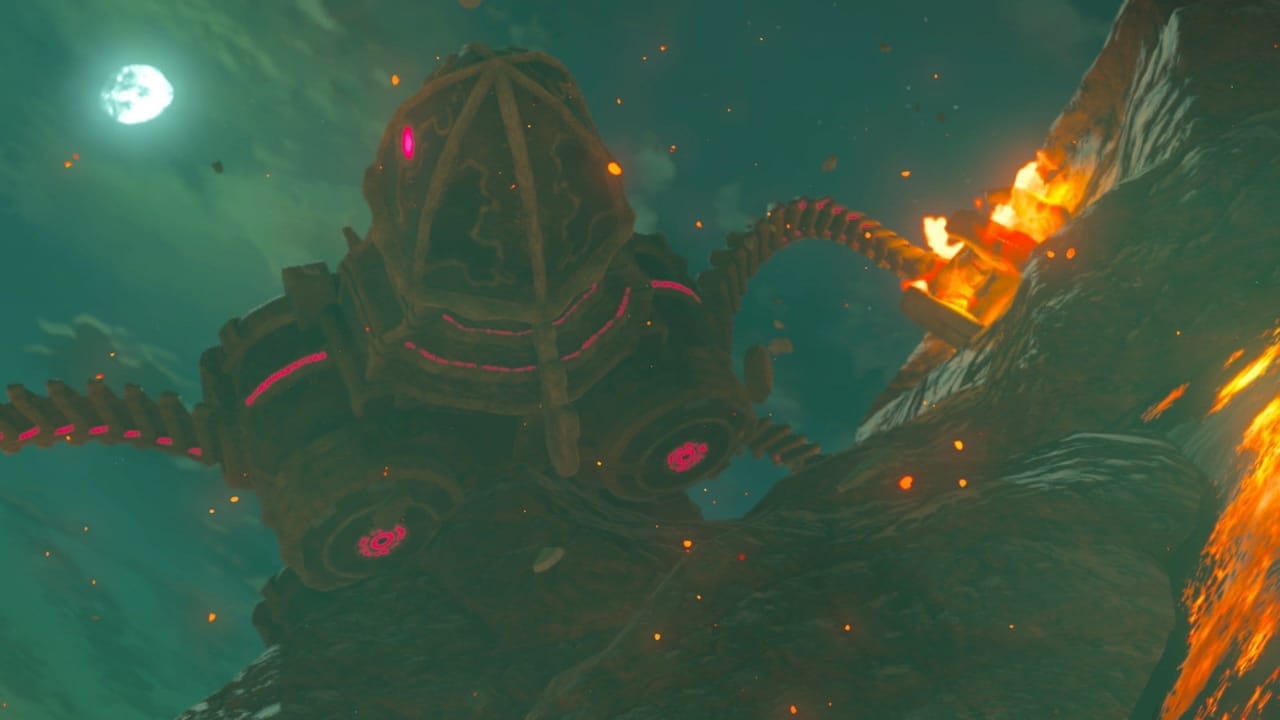
Breath of the Wild throws all of the essential gear at you from the beginning. Everything you earn from that point forward is purely optional since you can encounter and defeat Ganon (if you dare) from the very start. It’s an ambitious approach to gameplay progression that makes the game, well, what it is. You simply go where you wish and do what you please, which is why everyone’s tales of playing through the game are never the same. There’s something special there that would be sacrificed at the expense of conforming to Zelda’s entrenched formula, but what have been the costs of taking this route?
One of the most disappointing results is how the Divine Beast dungeons and even a good portion of the Shrines are dull. Instead of forming sprawling dungeons with meaningful backtracking, creative puzzles formed around items, and small enemy encounters along the way, these boss dungeons are a vapid series of terminal hunting quests that take little time to finish. As for the boss fights, they’re pushovers with predictable movesets and uninspired design. With the exception of Thunderblight Ganon, all of the bosses (including Ganon himself) are all show and no substance. The same could also be said for Guardians in the open world, which are only a threat due to their exaggerated health and laser beams that can be parried easily with practice. Could they have had multiple attacks with their legs at close range? Various weapons at their disposal? Of course, while the Guardians in the Shrines address this very concern, it’s a shame that none of them are different across the spectrum with the exception of health buffs, making the Major Tests of Strength fundamentally no different than their easier counterparts. If I want those Guardian parts, they should be tough to get.
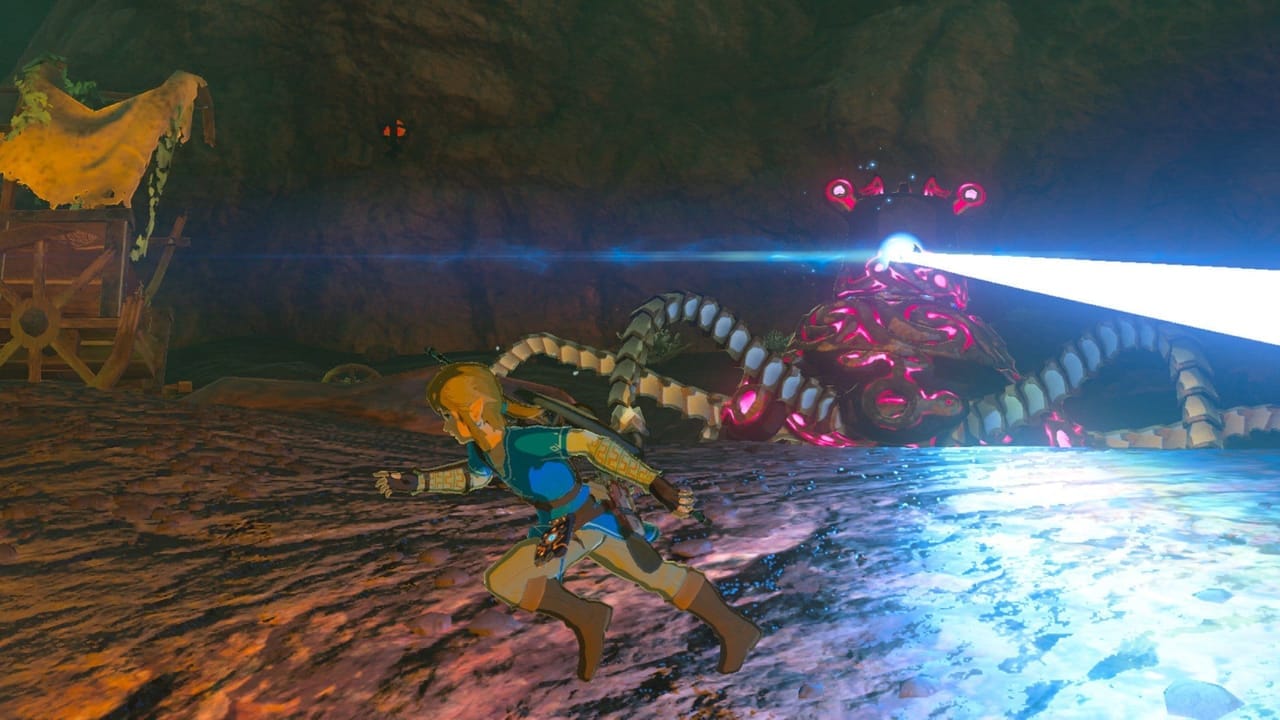
On the subject of Shrines, there are a good amount that force you to be creative with how you solve them. Whether they play with physics, elements, or logic, I exclaimed in delight various times when I solved a seemingly convoluted Shrine. On the other hand, a good deal of Shrines gave false pretenses with big dungeons that had threadbare brainteasers. Others had solutions so immediately obvious that I was stunned to be done with them in less than a couple minutes. It speaks for the game spreading the depth of its creative level design and puzzles too thin. I would’ve much rather had more Shrines combined with the Divine Beasts to make them longer and deeper, even if I understand a certain amount were created to teleport to helpful locations and entice exploration. But even if these changes are made, one of the greatest hurdles is balancing this with the philosophy that any one Shrine can be approached first since there are no boundaries.
This applies to the story as well, which could've been one of the easiest missteps to avoid. Many open world games allow you to explore anywhere you wish from The Witcher 3: Wild Hunt to Horizon Zero Dawn, but there are constraints to lend progression and structure to the narrative. In other words, the discovery of new areas and a growing arsenal of abilities go hand in hand with the rising and falling action. This isn’t as possible with Breath of the Wild. All of the stories surrounding the Divine Beasts are standalone. Ganon is a force of nature rather than an antagonist with personality. The flashbacks may give a lot of great conflict and depth to characters like Zelda and the Champions, but it would’ve arguably been better had these memories been integrated with a basic, linear progression to the story. Bad voice acting aside, the pacing and drama of the story seems off here, but that doesn’t mean there isn’t a lot of great stories in Breath of the Wild. Indeed, while it may sound sappy, how you choose to progress and what you discover is a story of your own making. There are superb side quests and strings of sincere dialogue peppered throughout the game that genuinely made me laugh and connect with characters. However, there's something lost in this particular narrative due to its scattered nature.
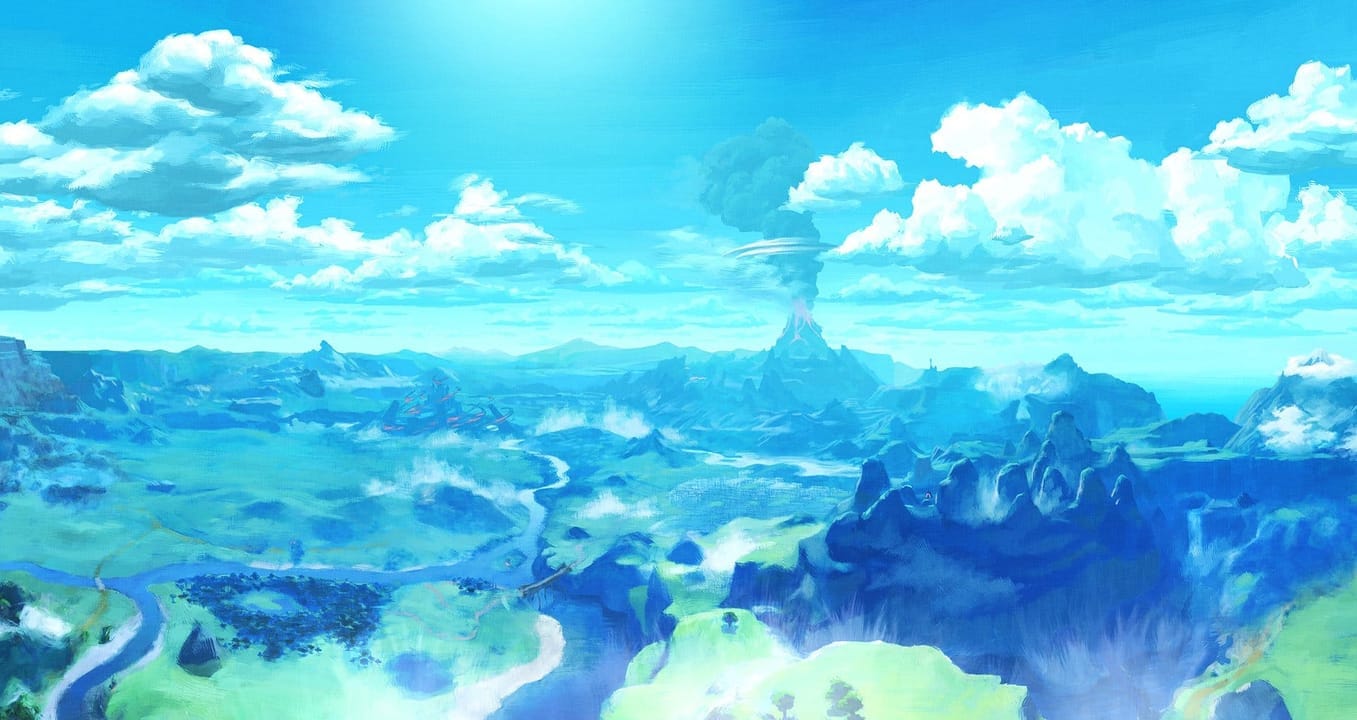
All of this being said, The Legend of Zelda faces an ultimatum. Speaking with Famitsu, series producer Eiji Aonuma-san said that Breath of the Wild has likely become a new template for the franchise:
I think that, in the future, open air games will be the standard for Zelda.This is both concerning and wonderful to hear, but should the series move even more toward open world ideas, its systems, level design, and exploration will veer even further from what we’ve traditionally known as “Zelda” for the past two decades. With this in mind, should the series reign in this approach and bring back some linearity for the sake of its classic approach to dungeons, pacing, and even storytelling instead? Either way, there are still some general improvements to be made as the franchise glides onward as it seems poised to turn into something even wilder than before. Considering Nintendo's track record, I can only hope that occurs in a positive sense.
Disclosure: Hylia serif font in header image courtesy of “Omni.” You can check out and download the font from his website.
Have a tip, or want to point out something we missed? Leave a Comment or e-mail us at tips@techraptor.net
